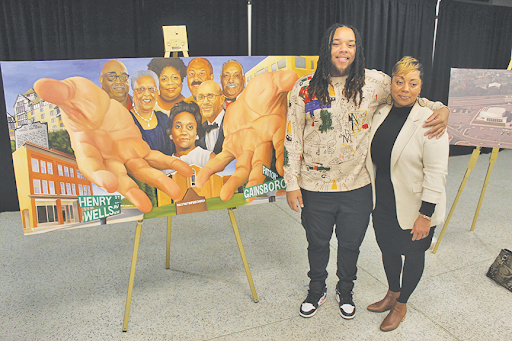Untold or often overlooked stories about the contributions and plight of the African American community tend to garner more traction during Black History Month. Six decades ago, Tank Town, unbeknownst to many, was a Gainsboro neighborhood that thrived as an entertainment business district for African Americans.

In 1971, as new urban projects pullulated through the area, the Roanoke Civic Center, known today as the Berglund Center, was built in replacement of Tank Town. Businesses and houses in Gainsboro were also destroyed as more and more projects in Roanoke City were developed. According to Dr. Richard Chubb, 86, there was a time when approximately 1,600 homes surrounded the post office building.
“I often think about how far we have come as a society since I was a teenager,” he said. “I have experienced the absolute best, as well as the absolute worst, that Roanoke has to offer. I’m glad that I’m still here to make sure that our history is never forgotten.”
Through a series of initiatives, the Berglund Center, led by activist Jordan Bell, is celebrating the history of the Gainsboro community. Last year, a city marketing employee set up a meeting between Bell, Chubb, and Robyn Schon, the Director of Civic Facilities. During that gathering emerged a consensus on two ideas: a suggestion to name rooms in the venue after Black Roanokers Kathleen Ross, David Ramey Sr., and Chubb as well as renaming the last remaining tree from that era to Tank Town.
“It is important to recognize the Berglund Center’s painful past so we can make impactful decisions for the future. We want to honor this community, and show them that they’re not forgotten,” said Schonn.
After the Berglund Center received a grant, Roanoke Arts & Culture coordinator Douglas Jackson commissioned Bryce Cobbs to create it. From there, Bell and Cobbs interviewed most of the people who would appear on the mural – Carolyn Hubbard, Sherwood Kasey, Joe Simms, Charles Price, Kathleen Ross, Jelly Riles, and Brenda Randolph. Schon added that QR codes will be placed in the Berglund Center area so people can learn additional information about Black history in the region.
“When I got the call, I was honestly in shock. Conversations with certain family members of the individuals helped to shape my creative vision. From start to finish, I’d say this project took approximately six months,” Cobbs said. “Without the contributions of many, most notably Jordan, there would be no mural. All of my designs are done with a purpose. When my community sees the mural, I hope in it they see themselves.”
Given how talented Cobbs is, it should come as no surprise that this isn’t his first project to be commissioned. Among his other notable works include the conceptual drawing of a future Henrietta Lacks statue; contributions to an “End Racism Now” street painting on Campbell Avenue; and a mural of the late rapper Nipsey Hussle.
Sarah Coleman, 65, said that her grandchildren’s faces lit up the first time that they saw the mural. “They couldn’t stop asking me questions and I enjoyed every second of it. I’m thankful for the city investing in our history,” she said.





